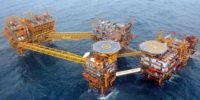Going forward, ISI's Bertera recognizes that with Envision's creation as a tool "largely focused on design and planning," metrics for later construction and O&M phases need more attention.
Developing a construction "module" is among the task orders of Envision's new review board, which had its first meeting in May. "To take advantage of the shorter time scales more closely associated with the construction phase of a project, the tool needs to focus more on practical ways to build that have more of an impact upfront," says Skanska Vice President Paul Haining, one of the contractor's managers who will lead the effort.
Stantec's Janowitz also sees attention to allow Envision to be used in a "systems" approach that will allow planning for multiple projects and across types of infrastructure.
Triple Bottom Line Impacts
Users also report more interest by power and industrial clients. ISI is outreaching to more contractors and private-sector owners. Bertera notes a recent Dow Chemical inquiry.
ISI also is refining Envision's metrics to measure return on investment that encompasses a project's financial, social and environmental impacts—referred to as the "triple bottom line."
Impact Infrastructure's Williams is working with IT firm Autodesk to perfect AutoCASE, a cloud-based tool that links Envision to visualization software. "You plug in project parameters and the tool provides a probability-based return on investment dollar value," says William A. Wallace, a Colorado-based sustainability consultant and early developer of Envision.
"Our AutoCASE tool is the only cloud-based automated product that plugs into BIM technology to run real-time cases mapped to Envision," says Williams, who pioneered the technology at HDR before retiring in 2012 to form his firm. "Our goal is to create a common analytical engine that runs sector specific metrics" and enables project comparisons "on the basis of total returns," he says.
Stantec used the ROI tool on work it did to develop green infratructure development guidance analysis for Pima County, Ariz., working with Impact Infrastructure as a pilot project. "It was quite helpful in analyzing and supporting analysis and conclusions regarding opportunities to utilize Sustainable ROI to develop and adopt practices and support these options with a robust business case," says Janowitz. By analyzing choices and full benefits over a project's entire life cycle, "We believe it can be of benefit for designers and engineers and can be a way to communicate results and defend choices to political leaders or to the public," he adds.
Impact Infrastructure recently released an AutoCASE version that includes Canadian data and green infrastructure cost estimating features, Williams adds.
Madison sewerage official Mucha sees greater Envision acceptance "if we start to frame [it] as more of an accountability and quality assurance tool and less as a sustainability tool." As an ISI director, "that is something I will want to see happen," he adds. Burns & McDonnell's Sauer, an Envision review board member, says the tool offers "an edge in the marketplace."
Envision expertise can provide more firms with "the opportunity to move up the food chain," adds consultant Wallace. "Instead of responding to RFPs, they can help plan the infrastructure investment programs, figure out how to deliver projects under conditions of uncertainty and do so charging higher rates."










Post a comment to this article
Report Abusive Comment